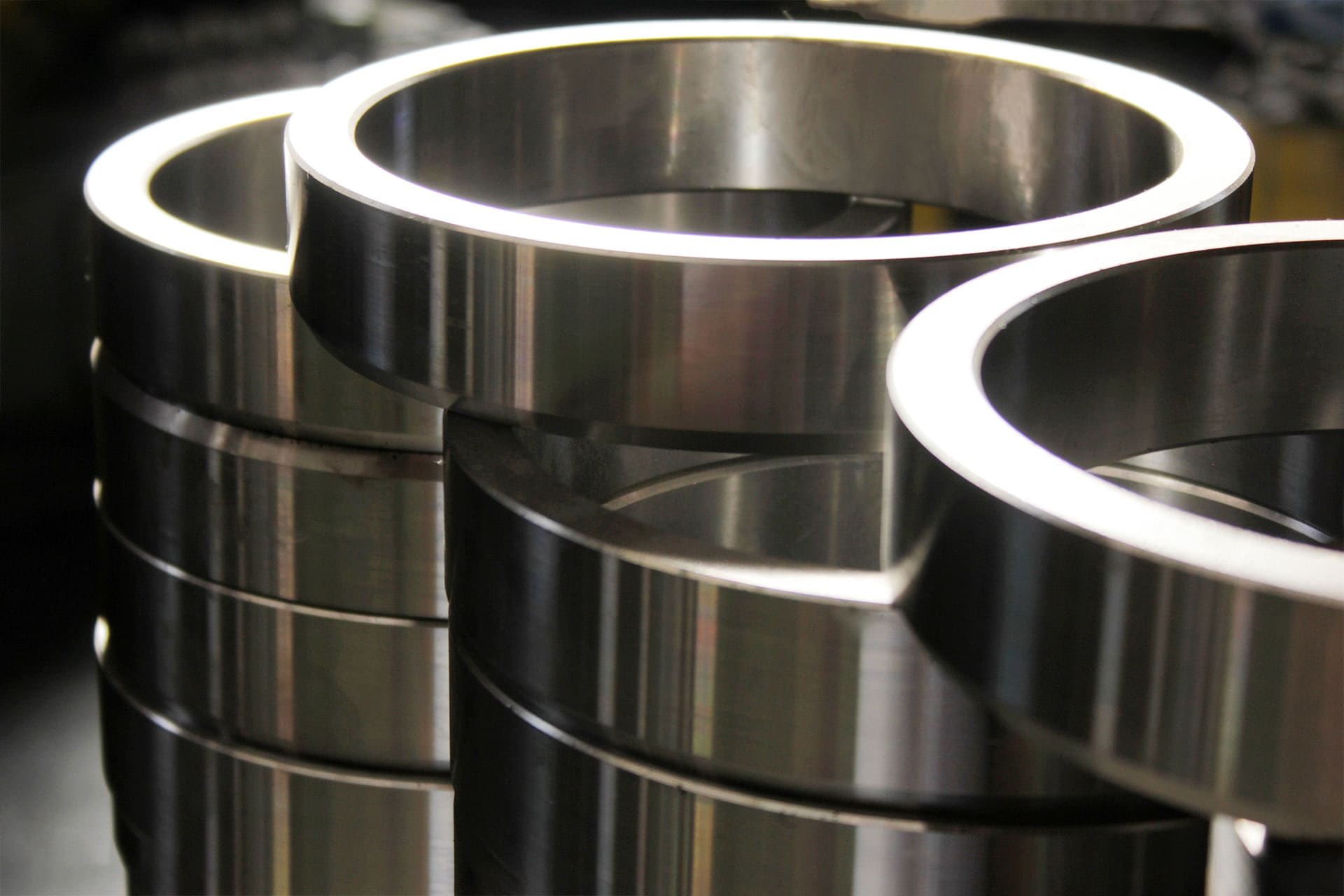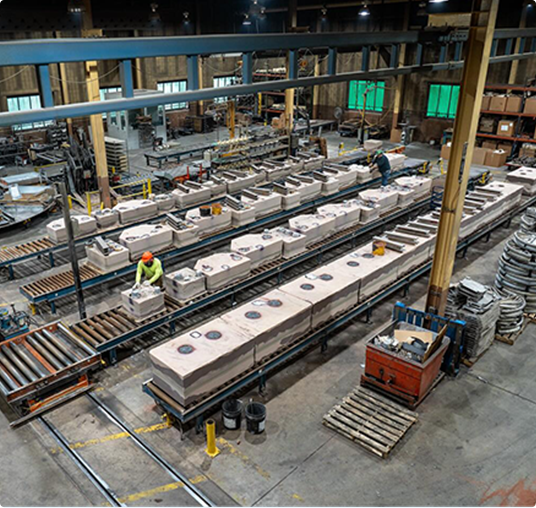Aluminum Castings and Metal Castings: a comprehensive look at their uses
Checking Out the Versatile Makes Use Of and Applications of Light Weight Aluminum Castings in Modern Industries
Light weight aluminum spreadings have actually come to be indispensable to various contemporary industries due to their unique homes. They use substantial advantages in weight decrease, thermal conductivity, and deterioration resistance. From auto technologies to applications in durable goods and building and construction, their convenience is remarkable. Yet, real level of their influence prolongs beyond immediate advantages, hinting at wider ramifications for sustainability and efficiency. What exists ahead for light weight aluminum castings in an ever-evolving commercial landscape?
Automotive Sector Innovations
The automotive sector has increasingly embraced light weight aluminum castings to boost vehicle efficiency and efficiency. By making use of light weight aluminum, producers can create lighter elements, which add to improved fuel economy and minimized exhausts. Trick applications consist of engine blocks, transmission instances, and structural components, where the material's strength-to-weight ratio provides sturdiness without adding excess weight.
Light weight aluminum castings likewise offer superior thermal conductivity, which helps in better warm dissipation, thereby improving engine efficiency. Developments in casting modern technologies, such as die spreading and sand spreading, enable the production of intricate geometries, allowing for ingenious layouts that optimize room and performance.
The recyclability of light weight aluminum straightens with sustainability goals in the vehicle field, advertising eco-friendly techniques. As the sector continues to introduce, the usage of aluminum spreadings is most likely to expand, driving additional improvements in lorry design and efficiency.
Aerospace Developments and applications
While the aerospace sector proceeds to focus on weight decrease and gas efficiency, aluminum spreadings have actually emerged as a vital product option for different applications. Their light-weight nature, paired with high strength-to-weight proportions, permits significant improvements in aircraft performance and efficiency. Aluminum castings are frequently used in structural parts, such as fuselage frames and wing parts, where decreasing weight is necessary.
Current improvements in light weight aluminum spreading innovations, consisting of enhanced alloy solutions and accuracy casting techniques, have further enhanced the material's efficiency capacities. These innovations enable the production of intricate geometries and detailed layouts while keeping architectural stability. Additionally, light weight aluminum's superb deterioration resistance guarantees longevity and dependability in rough aerospace atmospheres.
As the aerospace market progressively welcomes sustainability, aluminum spreadings provide a recyclable remedy that lines up with environmentally friendly methods, making them a critical component in the development of next-generation airplane.
Consumer Product and Everyday Products
As customers increasingly seek light-weight yet durable products for day-to-day products, light weight aluminum spreadings have gained appeal in numerous consumer products. The unique buildings of aluminum, including its resistance to rust and superb thermal conductivity, make it an ideal option for things like kitchenware, household appliances, and outside equipment. For instance, aluminum cast frying pans and pots provide even warm circulation, enhancing cooking effectiveness. Furthermore, making use of light weight aluminum in things such as bicycle frames and luggage ensures an equilibrium in between toughness and transportability. Manufacturers appreciate aluminum spreadings for their adaptability, as they can be easily built right into complicated shapes while maintaining architectural honesty. Additionally, the capability to recycle light weight aluminum without deteriorating its residential or commercial properties lines up with growing customer preferences for lasting products. Generally, light weight aluminum spreadings are indispensable to the manufacturing of long lasting, practical, and aesthetically pleasing consumer items, fulfilling the demands of modern way of lives.
Construction and Architectural Makes Use Of
Light weight aluminum castings have come to be an important element in building and construction and architectural layout, particularly due to their strength and light-weight nature. These homes make aluminum a perfect choice for numerous applications, consisting of architectural aspects, facades, and ornamental attributes - Wisconsin Aluminum Foundry. Home builders and architects increasingly utilize aluminum spreadings for window frameworks, doors, and roof systems, improving both functionality and visual appeals. The material's resistance to deterioration even more prolongs its life expectancy, decreasing maintenance expenses and guaranteeing durability in varied ecological problems
Light weight aluminum can be quickly formed into intricate layouts, allowing for cutting-edge architectural expressions. Its versatility promotes the production of personalized items that satisfy details design requirements, from elaborate barriers to intricate supports. As sustainability ends up being a top priority, aluminum's recyclability contributes to its charm in green building and construction techniques. Overall, aluminum castings are changing the construction industry by giving light-weight, sturdy, and aesthetically enticing services.
Electrical and Electronic Parts
Aluminum spreadings play an important duty in the manufacturing of light-weight electrical units, which enhance mobility and efficiency in different applications. Additionally, their exceptional thermal conductivity makes them optimal for heat sinks, making certain peak performance and long life of electronic elements. Light weight aluminum's conductive homes contribute to its usage in numerous electric conductors, stressing its significance in contemporary technology.
Lightweight Electrical Units
Lightweight electrical enclosures play an important function in protecting delicate electronic elements from ecological aspects and physical damages. Built from light weight aluminum spreadings, these units are valued for their strength-to-weight ratio, making them excellent for numerous applications across markets. Their lightweight nature aids in minimizing overall system weight, which is vital in mobile and mobile electronics. Moreover, light weight aluminum's rust resistance boosts longevity, extending the lifespan of the encased components. The capability to mold and mildew light weight aluminum right into complicated shapes enables for personalized designs, accommodating certain needs while ensuring effective warmth dissipation. In addition, these discover this rooms can be easily incorporated into existing systems, supplying flexibility and versatility in modern technical atmospheres. Overall, lightweight light weight aluminum enclosures substantially add to the efficiency of electronic gadgets.
Heat Sinks and Conductors
While several products are made use of in electronic elements, light weight aluminum castings stand apart for their performance in warmth management as warmth sinks and conductors. Their exceptional thermal conductivity permits for effective heat dissipation, which is vital in stopping the getting too hot of digital gadgets. Aluminum's lightweight nature additionally enhances its viability for applications where weight is a substantial factor, such as in aerospace and vehicle industries. Furthermore, light weight aluminum castings can be quickly formed right into intricate forms, giving design adaptability for optimizing thermal performance. The rust resistance of light weight aluminum also adds to the durability and dependability of these components in numerous settings. As technology advances and gadgets end up being more small, the need for reliable heat administration services, like light weight aluminum castings, remains to expand.
Marine Sector Use
The marine sector progressively depends on light weight aluminum spreadings for their phenomenal resilience and deterioration resistance. These buildings make aluminum a suitable choice for different applications, consisting of boat hulls, engine components, and aquatic equipment. The lightweight nature of light weight aluminum spreadings makes it possible for boosted gas efficiency and much easier ability to move in watercraft, which is necessary for both industrial and recreational vessels.

Aluminum castings likewise provide considerable expense advantages as a result of their lengthy lifespan and low maintenance requirements, reducing the overall functional expenses for marine operators. Additionally, the flexibility of aluminum enables elaborate layouts that can fulfill particular efficiency needs.
Producers in the marine industry make use of innovative casting strategies to generate complicated forms, making certain that components meet strenuous safety and security and efficiency standards. As the demand for high-performance marine vessels grows, aluminum spreadings are positioned as a key product in boosting the performance and longevity of aquatic tools.
Sustainability and Recycling in Light Weight Aluminum Casting

Aluminum Recycling Refine
Recycling light weight aluminum plays an important function in reducing environmental effect and saving sources within the casting industry. The aluminum reusing procedure begins with the collection of scrap light weight aluminum, which can consist of old parts, producing waste, and post-consumer items. This scrap is after that sorted, cleaned up, and shredded into tiny items to assist in melting.
As soon as prepared, the light weight aluminum scrap is melted in a furnace at reduced temperature levels than main light weight aluminum production, considerably reducing energy usage. The liquified aluminum is then cast right into ingots or various other forms for reuse in numerous applications - Metal Castings. This closed-loop system permits for the reliable recovery of aluminum, preserving its residential properties while lowering the need for virgin materials. Subsequently, the recycling process is an important component of sustainable methods in light weight aluminum casting
Ecological Advantages
While light weight aluminum casting plays a vital role in numerous markets, its environmental advantages are particularly impressive pertaining to sustainability and resource conservation. The lightweight nature of light weight aluminum adds to energy performance in transportation, lowering gas consumption and go to the website exhausts. Furthermore, light weight aluminum spreading helps with the use of recycled products, significantly decreasing the energy needed for manufacturing compared to main aluminum. This recycling process minimizes waste and minimizes the environmental impact connected with mining and refining raw materials. Aluminum is 100% recyclable without degradation of its buildings, advertising a lasting lifecycle. By selecting light weight aluminum spreading, industries can substantially decrease their carbon impact while promoting resource effectiveness, making it an important option in the quest of eco friendly manufacturing practices.
Closed-Loop Equipments

Frequently Asked Concerns
What Are the Trick Advantages of Light Weight Aluminum Castings Over Various Other Materials?
Aluminum castings use light-weight residential properties, superb rust resistance, and high strength-to-weight proportions. They can be conveniently built into complex shapes, supply excellent thermal and electrical conductivity, and are affordable, making them more effective over numerous alternate products.
Just how Is the Light Weight Aluminum Spreading Refine Environmentally Friendly?
The aluminum casting process is eco-friendly because of its recyclability, reduced energy consumption, and minimized waste production. Its ability to make use of recycled products minimizes the carbon footprint, advertising sustainability within manufacturing methods.
What Are Typical Challenges in Light Weight Aluminum Casting Manufacturing?
Usual obstacles in light weight aluminum casting production consist of keeping dimensional precision, taking care of thermal tightening, stopping defects like porosity and additions, making sure appropriate mold design, and optimizing production performance while minimizing product waste and ecological effect.
Exactly How Do Light Weight Aluminum Castings Compare in Price With Various Other Production Approaches?
Aluminum castings normally use affordable expenses compared to various other making methods, specifically for medium to high-volume manufacturing. Their reduced initial tooling expenditures and reliable material usage can lead to beneficial anonymous business economics in time.
What Future Fads Are Expected in Light Weight Aluminum Casting Technology?
Future fads in aluminum casting innovation are expected to include advancements in automation, enhanced alloy compositions, boosted recycling approaches, and the combination of 3D printing, all focused on boosting efficiency, lowering expenses, and minimizing ecological impact.
Current developments in light weight aluminum casting modern technologies, including enhanced alloy formulations and precision casting strategies, have actually even more boosted the material's efficiency capabilities. Aluminum spreadings have ended up being an essential component in building and construction and architectural layout, particularly due to their stamina and light-weight nature. The aluminum recycling procedure starts with the collection of scrap aluminum, which can include old elements, manufacturing waste, and post-consumer items. When prepared, the light weight aluminum scrap is thawed in a furnace at lower temperature levels than key aluminum production, considerably minimizing power consumption. Additionally, aluminum spreading facilitates the use of recycled materials, considerably decreasing the power needed for production contrasted to main light weight aluminum.